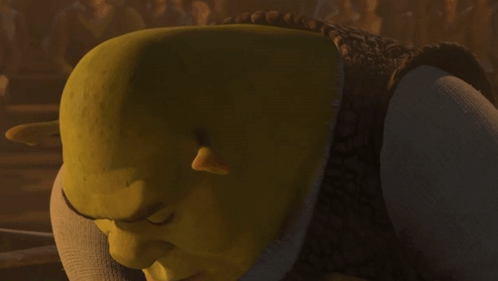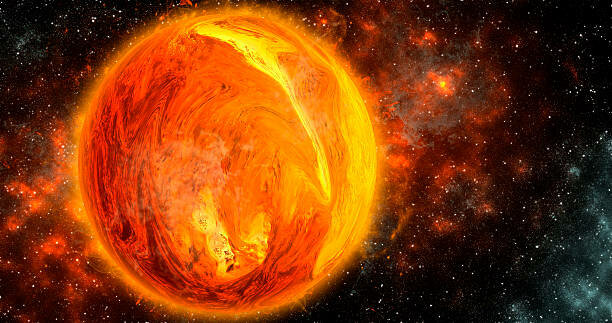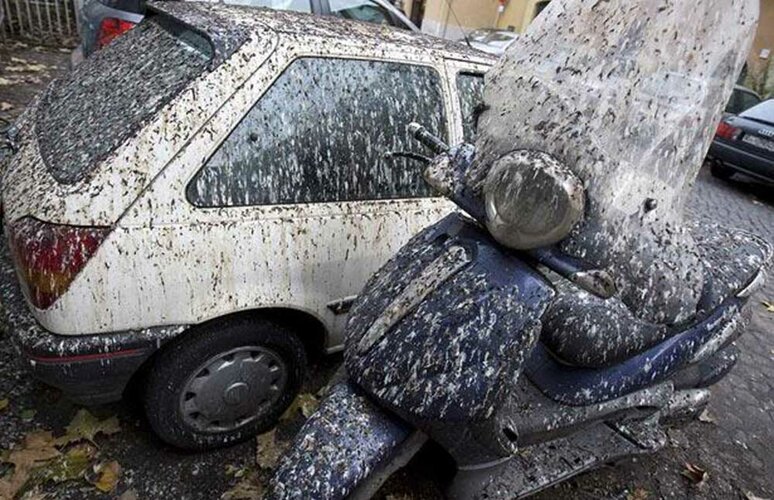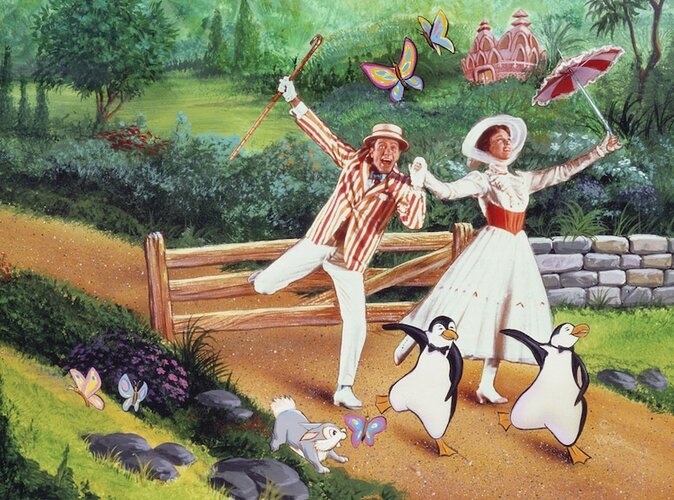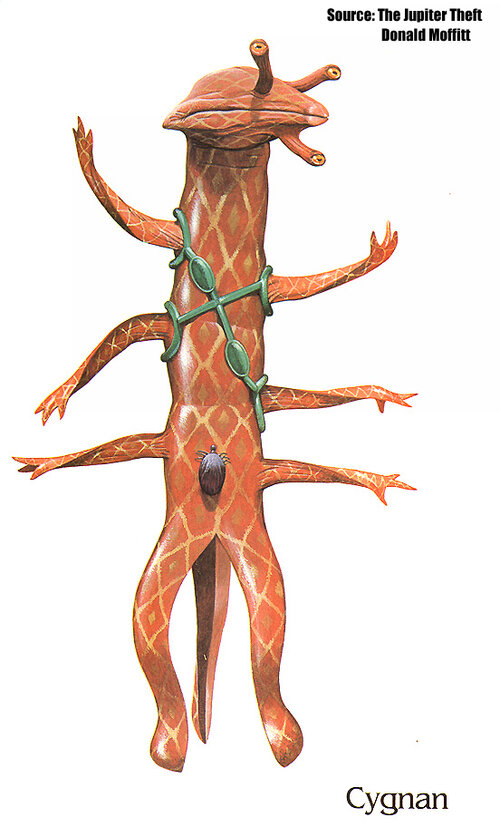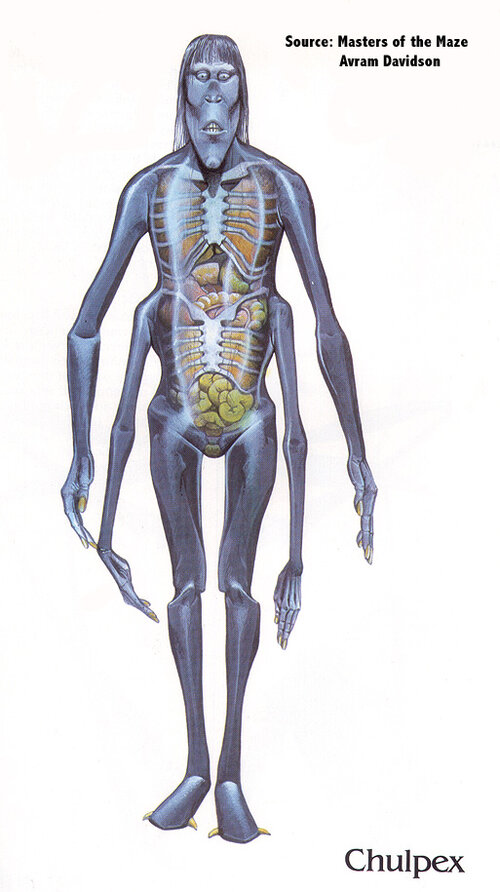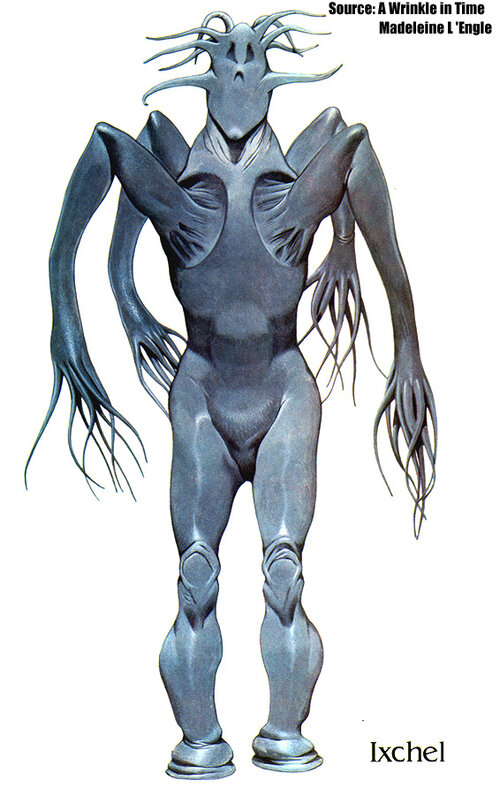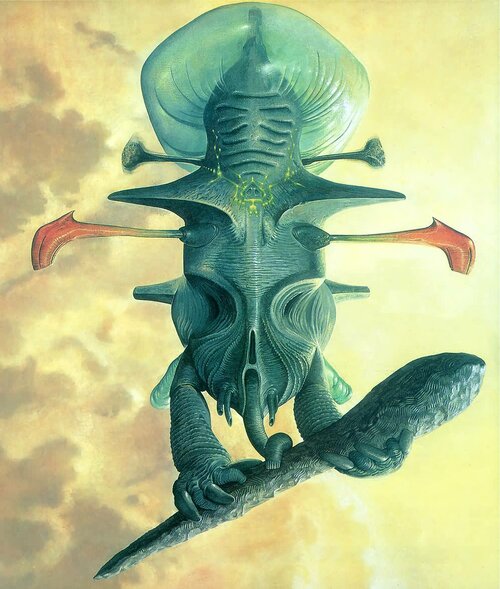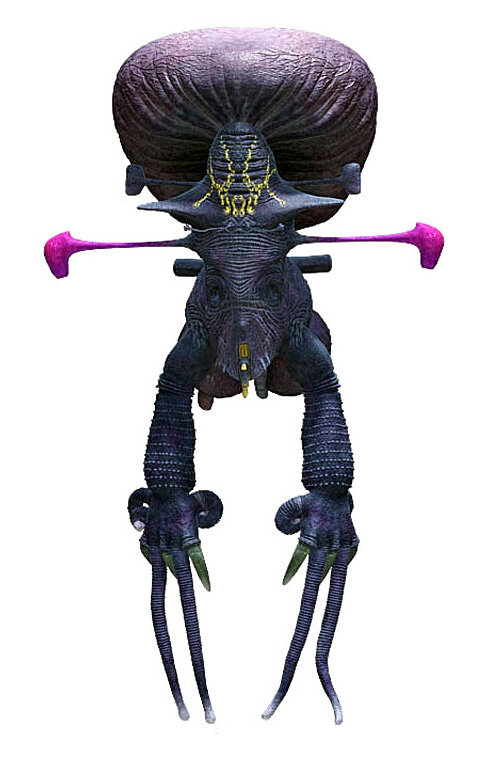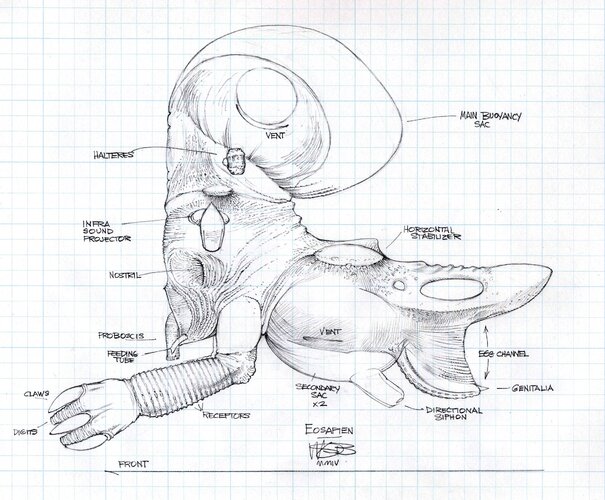If one Chicxulub is not enough, a single ship specialized in asteroid mining can deflect several hundred asteroids into an inner orbit of the System. Asteroids are cheap.Insufficient. No cometary impart since Theia has wiped out the surface life, much less subsurface. You need to liquefy the entire crust, which is no mean feat.
You are using an out of date browser. It may not display this or other websites correctly.
You should upgrade or use an alternative browser.
You should upgrade or use an alternative browser.
Are Sci Fi monsters and aliens too hard to kill?
- Thread starter uk 75
- Start date
I doubt hundreds of asteroids are enough to sterilize the planet. However, a few asteroids converted into giant solar mirror, or a near-sun laser conversion array, might be enough to melt the surface over time.If one Chicxulub is not enough, a single ship specialized in asteroid mining can deflect several hundred asteroids into an inner orbit of the System. Asteroids are cheap.
Right next to Ursula Le Guin.....Neither is much of anyone else. Go to a big book store (B&N, say) and check out what's bigger: the sci-fi section or the "teen girl supernatural romance" section. *Especially* when you weed the clear fantasy out of the sci-fi.
View: https://x.com/UnwantedBlog/status/1781490900880838949
Asteroids may not achieve total annihilation, at least that's what happened during the Motie Wars. A more expensive and slower solution: the mirrors should orbit the planet in the opposite direction of its rotation and should be placed in many orbits with different inclinations in order to illuminate the entire surface. A cheaper solution would be to turn some asteroids into clouds of dust that would cover the planet orbiting above the atmosphere, eventually turning that world into a cryosphere. Anyway, I think using Mega-Lasers is more spectacular. Which ships do you propose to use...the battleship Lenin or the cruiser MacArthur?I doubt hundreds of asteroids are enough to sterilize the planet. However, a few asteroids converted into giant solar mirror, or a near-sun laser conversion array, might be enough to melt the surface over time.
Attachments
Yes.Which ships do you propose to use...the battleship Lenin or the cruiser MacArthur?
If a biosphere is worth killing, it's worth over-killing.
- Joined
- 3 June 2011
- Messages
- 18,296
- Reaction score
- 12,107
Like the Terminator asking for a pulsed plasma rifle in the 40 watt range.Best line in that is the big energy weapons are firing and the Captain says they hit them with "six-million electron volts..." (less than one watt...) But it sounded good in the 1950's...
Rhinocrates
ACCESS: Top Secret
- Joined
- 26 September 2006
- Messages
- 3,009
- Reaction score
- 7,617
Ah yes, that attack was serious and nobody was called Shirley.
- Joined
- 11 March 2012
- Messages
- 3,244
- Reaction score
- 3,170
May I suggest that the main problem is that most human weapons are designed to kill mammals, but chances are that the first aleins we encounter will not be mammals.
When you consider the huge amounts of time and space until we reach the next habitable planet, chances are that aliens will be nowhere near the same stage of evolution as current humans.
Humans may not even recognize many species of lichens or sea creatures.
My favorite analogy is sky whales. Just for a moment, consider the sort of creatures that might inhabit the atmosphere of a gas giant planet. They would look more like blimps, bouyed aloft by the hydrogen gas that ferments in their intestines. Hydrogen gas is very flammable when mixed with earth's atmosphere.
Now consider how difficult is was for early airplanes to shoot down the static-balloons that were manned by artillery spotters during World War 1. These balloons were very unpopular with ground troops, so they were constantly asking the fledgling air forces to shoot them down. Early attempts with solid bullets only produced slow leaks. Eventually they needed to develop incendiary bullets for .30 caliber machine guns. .30 caliber was the dominant size for WW1 machine guns.
When you consider the huge amounts of time and space until we reach the next habitable planet, chances are that aliens will be nowhere near the same stage of evolution as current humans.
Humans may not even recognize many species of lichens or sea creatures.
My favorite analogy is sky whales. Just for a moment, consider the sort of creatures that might inhabit the atmosphere of a gas giant planet. They would look more like blimps, bouyed aloft by the hydrogen gas that ferments in their intestines. Hydrogen gas is very flammable when mixed with earth's atmosphere.
Now consider how difficult is was for early airplanes to shoot down the static-balloons that were manned by artillery spotters during World War 1. These balloons were very unpopular with ground troops, so they were constantly asking the fledgling air forces to shoot them down. Early attempts with solid bullets only produced slow leaks. Eventually they needed to develop incendiary bullets for .30 caliber machine guns. .30 caliber was the dominant size for WW1 machine guns.
Floating balloon aliens would make interesting adversaries. Earth seems an unlikely place for them to hang out at, though.
If they're naturally floating in oxygen atmosphere using hydrogen lift gas, it's a safe bet that taking them out with lasers will be damn near trivial.
If they're naturally floating in oxygen atmosphere using hydrogen lift gas, it's a safe bet that taking them out with lasers will be damn near trivial.
- Joined
- 6 November 2010
- Messages
- 5,240
- Reaction score
- 5,461
A Meeting with Medusa, with a sequel written by Stephen Baxter and Alastair Reynolds: The Medusa Chronicles

 en.wikipedia.org
en.wikipedia.org

The Medusa Chronicles - Wikipedia
If coexistence with birds already causes problems, attempts to integrate flying whales into our existence will undoubtedly generate the first interstellar war.
Attachments
- Joined
- 19 July 2016
- Messages
- 4,250
- Reaction score
- 3,438
Boaty McBoatface. Far better suited by having won a public competition and then rejected by so called smart people in favour of the Sir Richard Attenborough. After all, why ask if you are not prepared to comply with the winning entry?Asteroids may not achieve total annihilation, at least that's what happened during the Motie Wars. A more expensive and slower solution: the mirrors should orbit the planet in the opposite direction of its rotation and should be placed in many orbits with different inclinations in order to illuminate the entire surface. A cheaper solution would be to turn some asteroids into clouds of dust that would cover the planet orbiting above the atmosphere, eventually turning that world into a cryosphere. Anyway, I think using Mega-Lasers is more spectacular. Which ships do you propose to use...the battleship Lenin or the cruiser MacArthur?
Suitably demonstrating the fitness of just aboput any name for just about any purpose.
Or possibly the Mary Poppins?
HiA Meeting with Medusa, with a sequel written by Stephen Baxter and Alastair Reynolds: The Medusa Chronicles

The Medusa Chronicles - Wikipedia
en.wikipedia.org
Attachments
-
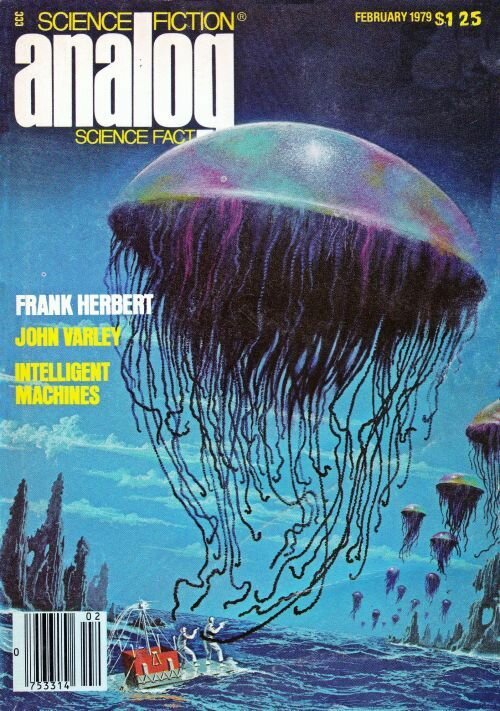 70d7663322593ab48a8a3b78286291f9.jpg99.2 KB · Views: 11
70d7663322593ab48a8a3b78286291f9.jpg99.2 KB · Views: 11 -
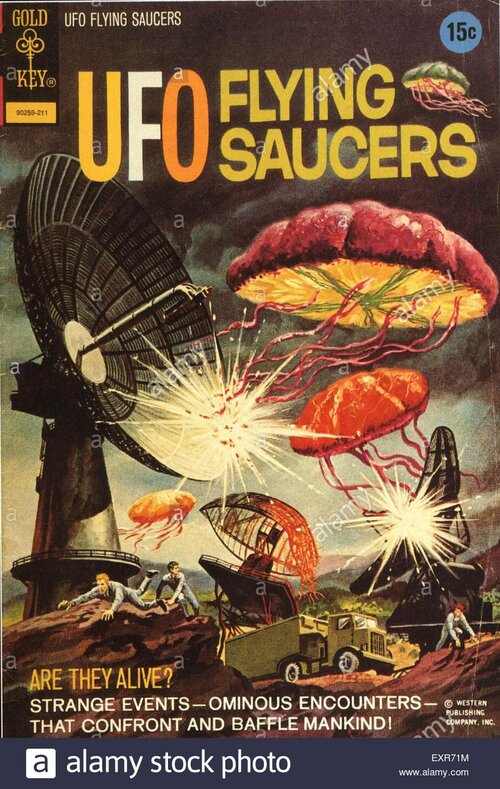 1950s-usa-ufo-magazine-cover-EXR71M.jpg224.1 KB · Views: 8
1950s-usa-ufo-magazine-cover-EXR71M.jpg224.1 KB · Views: 8 -
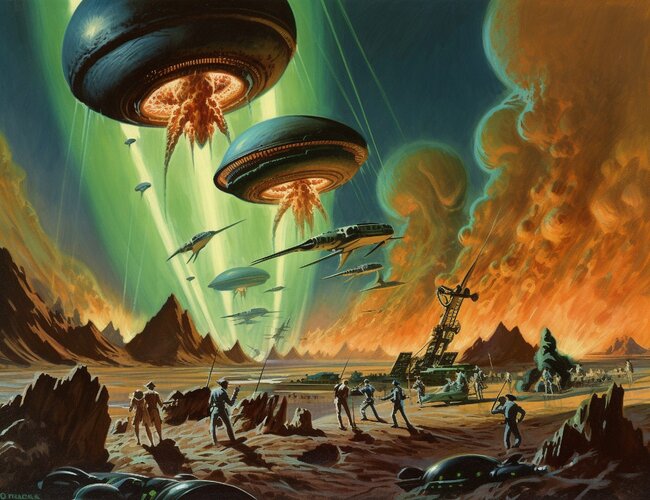 il_fullxfull.4765109142_npxo.jpg1.1 MB · Views: 8
il_fullxfull.4765109142_npxo.jpg1.1 MB · Views: 8 -
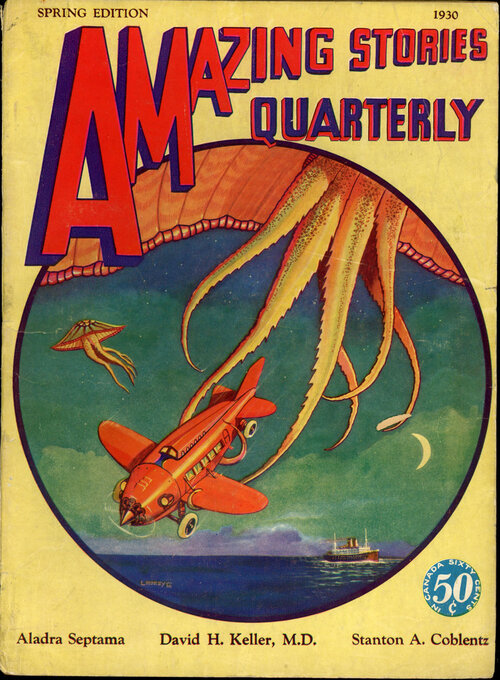 AMAZING-STORIES-QUARTERLY.-Spring-1930.jpg413.6 KB · Views: 7
AMAZING-STORIES-QUARTERLY.-Spring-1930.jpg413.6 KB · Views: 7 -
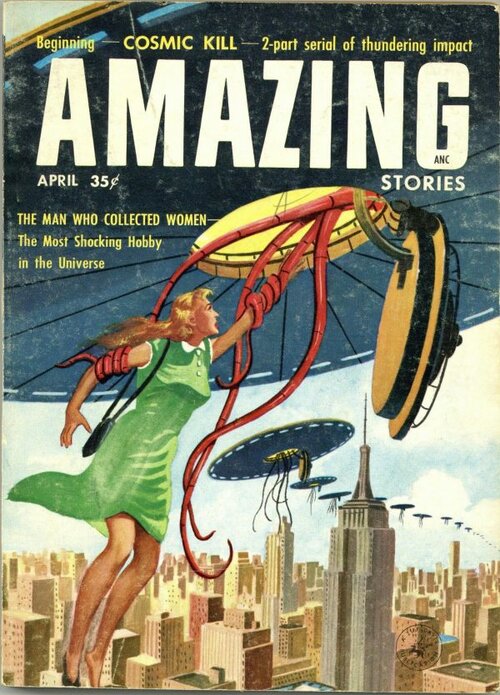 Amazing-Stories-April-1957-600x833.jpg130.6 KB · Views: 7
Amazing-Stories-April-1957-600x833.jpg130.6 KB · Views: 7 -
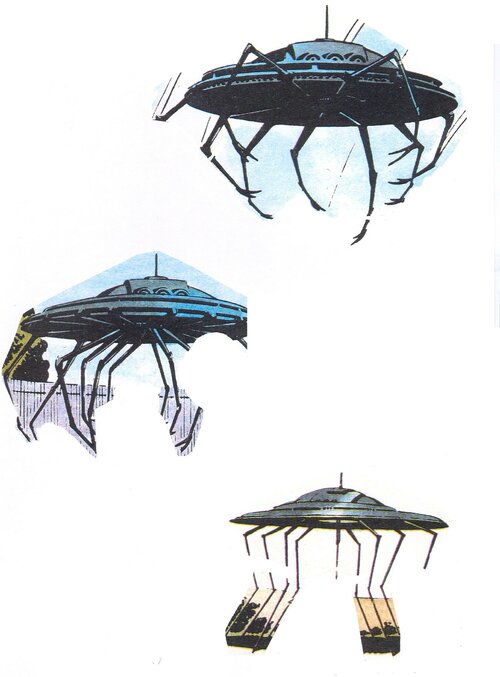 Escanear0115.jpg265.8 KB · Views: 7
Escanear0115.jpg265.8 KB · Views: 7 -
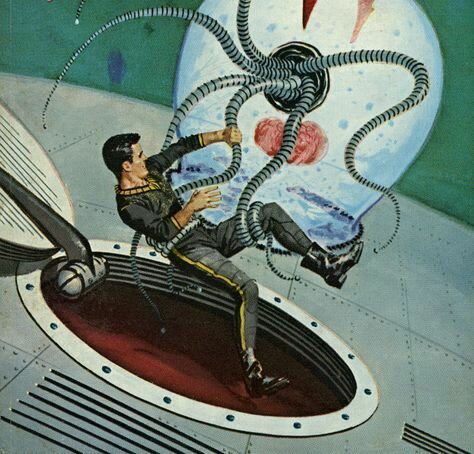 tumblr_oyiiyykNrt1v85sfao4_500.jpg58.1 KB · Views: 7
tumblr_oyiiyykNrt1v85sfao4_500.jpg58.1 KB · Views: 7 -
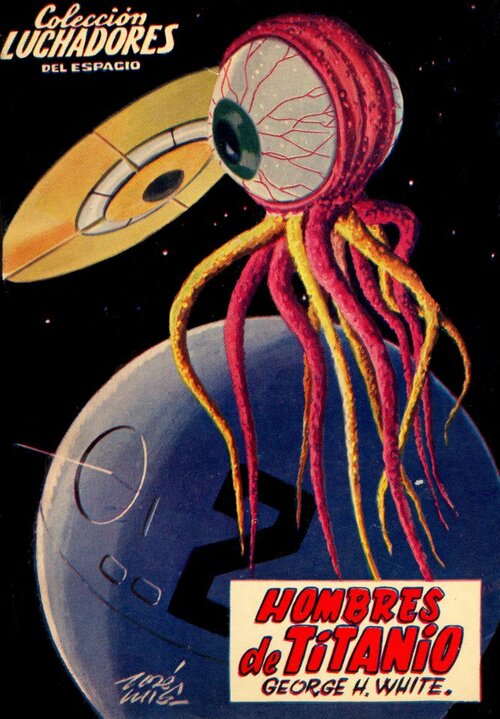 94a.jpg167.9 KB · Views: 7
94a.jpg167.9 KB · Views: 7 -
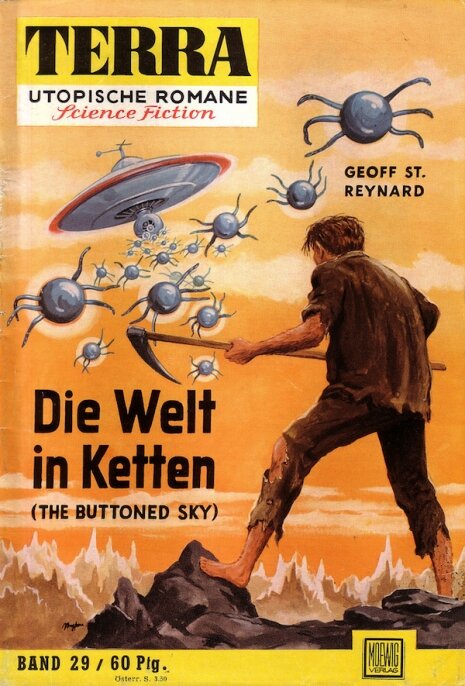 024terracov_465_686_int.jpg289.4 KB · Views: 11
024terracov_465_686_int.jpg289.4 KB · Views: 11
I hate musical movies and I'm a fan of AttenboroughBoaty McBoatface. Far better suited by having won a public competition and then rejected by so called smart people in favour of the Sir Richard Attenborough. After all, why ask if you are not prepared to comply with the winning entry?
Suitably demonstrating the fitness of just aboput any name for just about any purpose.
Or possibly the Mary Poppins?
Attachments
- Joined
- 19 July 2016
- Messages
- 4,250
- Reaction score
- 3,438
I am very much a fan of the global asset known as Sir David Attenborough. Much richer for his being around for a while yet, I hope.I hate musical movies and I'm a fan of Attenborough
I also think the name is appropriate. There was a competition among the public with names voted for and the winner supposedly used. In this instance, boaty McBoat face won and was rejected by the board. Live by the vote etc......
Rhinocrates
ACCESS: Top Secret
- Joined
- 26 September 2006
- Messages
- 3,009
- Reaction score
- 7,617
Various other blimp-like creatures too. One species in Fredrick Pohl's Jem and another in Harlan Ellison's collective world building exercise, Medea. Frank Herbert spun off from his participation in this for his Pandora stories. John Varley had the blimps in his Gaia trilogy, illustrated by Connor Freff Cochran here, in the first book, Titan.
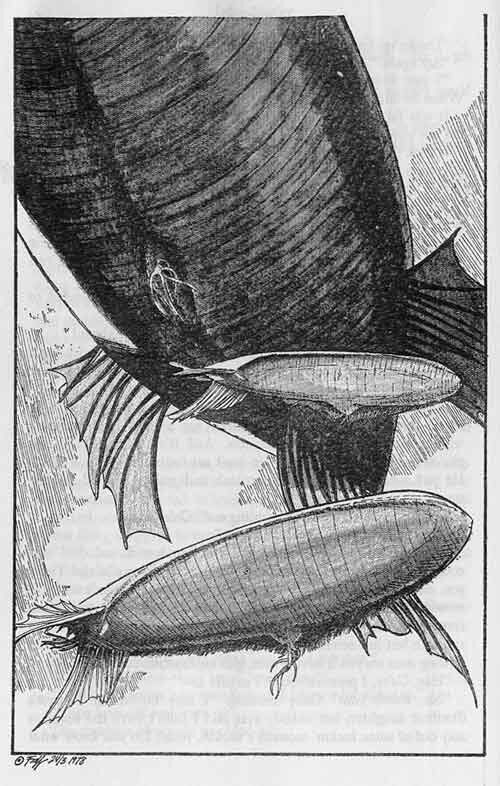
Rhinocrates
ACCESS: Top Secret
- Joined
- 26 September 2006
- Messages
- 3,009
- Reaction score
- 7,617
If you want a menu of aliens and want to select worthy opponents.

 en.wikipedia.org
en.wikipedia.org

Barlowe's Guide to Extraterrestrials - Wikipedia
Attachments
Rhinocrates
ACCESS: Top Secret
- Joined
- 26 September 2006
- Messages
- 3,009
- Reaction score
- 7,617
On the other hand, the crew of the starship might look at it as if it were a brick wall.Hoyle's Black Cloud would look at a Ramscoop like Jaws.
That might explain the fate of the Leonora Christine. In Poul Anderson's Tau Zero, a ramscoop starship hit a mini-nebula or 'nebulina' and was damaged so that it couldn't turn of its drive without risking destruction as its speed continually increased.
It's a pretty gripping story - I wouldn't mind seeing a film or miniseries made from it.
Last edited:
Rhinocrates
ACCESS: Top Secret
- Joined
- 26 September 2006
- Messages
- 3,009
- Reaction score
- 7,617
Another blimp, from Barlowe.
First he came up with a floating species in the illustrated book Expedition. A TV special was made based on this, Alien Planet.
Illustrations from the book and the special's website.
The gas bladder is impossibly small, but it's a nice idea - refreshingly non-humanoid. If the creature was almost entirely like a balloon animal, with variable gas pressure substituting for musculature, perhaps it might work (spiders use hydraulic pressure to extend their limbs and their musculature is only used to retract them). The large bulb at the top would simply ensure stability and provide a reserve. Anything with spikes would scare the sh*t out of it.
First he came up with a floating species in the illustrated book Expedition. A TV special was made based on this, Alien Planet.
Illustrations from the book and the special's website.
The gas bladder is impossibly small, but it's a nice idea - refreshingly non-humanoid. If the creature was almost entirely like a balloon animal, with variable gas pressure substituting for musculature, perhaps it might work (spiders use hydraulic pressure to extend their limbs and their musculature is only used to retract them). The large bulb at the top would simply ensure stability and provide a reserve. Anything with spikes would scare the sh*t out of it.
Attachments
Last edited:
- Joined
- 19 July 2016
- Messages
- 4,250
- Reaction score
- 3,438
I saw a study on how prolonged exposure to zero g affects the human body which, was based on the effects noted by crews in the environment as opposed to so called scientists working from ideology. Cannot find the bleeping thing though.
Nik
ACCESS: Top Secret
- Joined
- 15 July 2009
- Messages
- 1,263
- Reaction score
- 1,058
I'm reminded that 'Coconut Crabs', those tree-climbing scaries distantly related to the more familiar 'hermits'...

 en.wikipedia.org
... are progressively evolving bigger, better book-lungs to augment their juveniles' gills. FWIW, the youngsters 'go hermit' until too big and tough for most predators.
en.wikipedia.org
... are progressively evolving bigger, better book-lungs to augment their juveniles' gills. FWIW, the youngsters 'go hermit' until too big and tough for most predators.
To put it politely, their species seems to have 'growth potential'.
Else-where, there's that wry quip about Earth's hypothetical 'In Their Own Image' Creator or Designer having an inordinate fondness for beetles.
Plus an interesting observation that multiplying segments to extend body-plan lends itself to limb specialisation, then progressive reduction of load-bearers to hexapod...
We already know of copper-based oxygen carrying 'blood',. Though not as efficient in current ~20% O2 atmosphere as our iron-based, it seems to work well in near-anoxic conditions. Equivalent is our 'foetal' heme variant, usually lost within first year.
FWIW, in 'City of Fresno', my current 'WIP', a problem they will face is a planet whose inhabitants have fled massive mainland to defensible off-shore islands. One of their 'forest floor' fauna, an omnivorous 'sorta-protist', went polyploid, grew and multiplied, grew and multiplied, grew and grew to what the astonished humans describe as 'Shoggoids'.
Too many are the size of ground-cars, while each territory's 'Boss Beast' is big as a bus. Seriously difficult to kill: Like sponges, even fragments reform to mini-Shoggoids, continue eating, growing. Fire ? Beam weapons ? Char sloughed, remnant resumes insatiable nomming. Toxins ? Poisoned part gets sloughed. They eat anything in their slow path, including each other. Hermaphrodites, the adults bud clones, but also ovipositor eggs to metres underground.
Locals, happy to trade for minor stuff, demand the humans tackle these 'NSFW Purple Perils' to win permission to refuel 'Fresno' by gas-mining the system's sub-Saturnian for Deuterium and Helium_3. After considering 'Shoggoids' near-immunity to combat weapons, and the locals' triple-helix, wrong-handed biochemistry, the humans devise a cunning plan...

Coconut crab - Wikipedia
To put it politely, their species seems to have 'growth potential'.
Else-where, there's that wry quip about Earth's hypothetical 'In Their Own Image' Creator or Designer having an inordinate fondness for beetles.
Plus an interesting observation that multiplying segments to extend body-plan lends itself to limb specialisation, then progressive reduction of load-bearers to hexapod...
We already know of copper-based oxygen carrying 'blood',. Though not as efficient in current ~20% O2 atmosphere as our iron-based, it seems to work well in near-anoxic conditions. Equivalent is our 'foetal' heme variant, usually lost within first year.
FWIW, in 'City of Fresno', my current 'WIP', a problem they will face is a planet whose inhabitants have fled massive mainland to defensible off-shore islands. One of their 'forest floor' fauna, an omnivorous 'sorta-protist', went polyploid, grew and multiplied, grew and multiplied, grew and grew to what the astonished humans describe as 'Shoggoids'.
Too many are the size of ground-cars, while each territory's 'Boss Beast' is big as a bus. Seriously difficult to kill: Like sponges, even fragments reform to mini-Shoggoids, continue eating, growing. Fire ? Beam weapons ? Char sloughed, remnant resumes insatiable nomming. Toxins ? Poisoned part gets sloughed. They eat anything in their slow path, including each other. Hermaphrodites, the adults bud clones, but also ovipositor eggs to metres underground.
Locals, happy to trade for minor stuff, demand the humans tackle these 'NSFW Purple Perils' to win permission to refuel 'Fresno' by gas-mining the system's sub-Saturnian for Deuterium and Helium_3. After considering 'Shoggoids' near-immunity to combat weapons, and the locals' triple-helix, wrong-handed biochemistry, the humans devise a cunning plan...
- Joined
- 27 September 2006
- Messages
- 6,386
- Reaction score
- 6,767
Genetically modified goldfish that feast solely on the Shoggoids? A pathogen that causes the goop they're made of to crosslink into long-chain polymers, turning the whole thing into a giant block of plastic that can be harvested and carved into low income housing units?. After considering 'Shoggoids' near-immunity to combat weapons, and the locals' triple-helix, wrong-handed biochemistry, the humans devise a cunning plan...
I wrote some stories a few years ago where the US government has had actual Shoggoths (captured in Antarctica) under study for decades. They're virtually unkillable nightmare blobs. They'll eat anything; nothing can really poison them. But it's discovered that they like some things more than others. Ammonium nitrate, for example, they'll eat like candy. No matter how much of it they eat it doesn't sicken them. If they eat enough of it, though, their pyrogenic and even pyrotechnic properties become interesting.
- Joined
- 3 June 2011
- Messages
- 18,296
- Reaction score
- 12,107
Sounds almost like The Blob.I'm reminded that 'Coconut Crabs', those tree-climbing scaries distantly related to the more familiar 'hermits'...
... are progressively evolving bigger, better book-lungs to augment their juveniles' gills. FWIW, the youngsters 'go hermit' until too big and tough for most predators.
Coconut crab - Wikipedia
en.wikipedia.org
To put it politely, their species seems to have 'growth potential'.
Else-where, there's that wry quip about Earth's hypothetical 'In Their Own Image' Creator or Designer having an inordinate fondness for beetles.
Plus an interesting observation that multiplying segments to extend body-plan lends itself to limb specialisation, then progressive reduction of load-bearers to hexapod...
We already know of copper-based oxygen carrying 'blood',. Though not as efficient in current ~20% O2 atmosphere as our iron-based, it seems to work well in near-anoxic conditions. Equivalent is our 'foetal' heme variant, usually lost within first year.
FWIW, in 'City of Fresno', my current 'WIP', a problem they will face is a planet whose inhabitants have fled massive mainland to defensible off-shore islands. One of their 'forest floor' fauna, an omnivorous 'sorta-protist', went polyploid, grew and multiplied, grew and multiplied, grew and grew to what the astonished humans describe as 'Shoggoids'.
Too many are the size of ground-cars, while each territory's 'Boss Beast' is big as a bus. Seriously difficult to kill: Like sponges, even fragments reform to mini-Shoggoids, continue eating, growing. Fire ? Beam weapons ? Char sloughed, remnant resumes insatiable nomming. Toxins ? Poisoned part gets sloughed. They eat anything in their slow path, including each other. Hermaphrodites, the adults bud clones, but also ovipositor eggs to metres underground.
Locals, happy to trade for minor stuff, demand the humans tackle these 'NSFW Purple Perils' to win permission to refuel 'Fresno' by gas-mining the system's sub-Saturnian for Deuterium and Helium_3. After considering 'Shoggoids' near-immunity to combat weapons, and the locals' triple-helix, wrong-handed biochemistry, the humans devise a cunning plan...
Hanz2k
The truth is grey...
- Joined
- 17 February 2012
- Messages
- 154
- Reaction score
- 223
Guys, but why? What is the reason aliens will seek conflict with humans?
1. Dark Forrest implies that aliens want to efficiently eradicate humans. Just shoot couple relativistic missiles and the goal is accomplished.
2. Some religious reason? Can’t imagine civilization that have FTL and still perform crusades.
3. Resources - simple asteroid mining give you more.
4. Sex slaves - why we imagine we are sex compatible with aliens?
5. Hunting? - then they just fly in, perform safari and leave. Still most probably just use computer simulation. It’s cheaper than flying and killing.
Looking into our future, we will be replaced by AGI. The question is what will be AGI motivation? I assume survival, but survival in a sense to travel between multiverses to run from dying universe into fresh one and then leave forever.
BTW guys - just another thought - you realize that we are communicating with the whoever is in the future?
1. Dark Forrest implies that aliens want to efficiently eradicate humans. Just shoot couple relativistic missiles and the goal is accomplished.
2. Some religious reason? Can’t imagine civilization that have FTL and still perform crusades.
3. Resources - simple asteroid mining give you more.
4. Sex slaves - why we imagine we are sex compatible with aliens?
5. Hunting? - then they just fly in, perform safari and leave. Still most probably just use computer simulation. It’s cheaper than flying and killing.
Looking into our future, we will be replaced by AGI. The question is what will be AGI motivation? I assume survival, but survival in a sense to travel between multiverses to run from dying universe into fresh one and then leave forever.
BTW guys - just another thought - you realize that we are communicating with the whoever is in the future?
2. Some religious reason? Can’t imagine civilization that have FTL and still perform crusades.
Look at the world. There are cultures all about world religious domination *and* have developed their own nukes. Having a culture stuck in the 8th century *ethically* and religiously doesn't mean they won;t glom onto the latest technology. The jackholes who crashed into the Twin Towers happily trained on Microsoft Flight Simulator.
BTW guys - just another thought - you realize that we are communicating with the whoever is in the future?
Roko's Basilisk, baby.
Nik
ACCESS: Top Secret
- Joined
- 15 July 2009
- Messages
- 1,263
- Reaction score
- 1,058
2. Some religious reason? Can’t imagine civilization that have FTL and still perform crusades.
Sadly,, such are not mutually exclusive. Their FTL may be hired or stolen...
Worse, if you could 'tilt the market' enough by turning a bunch of crazies, of any flavour, loose on neighbours or rivals, some-one will so take a 'position' through proxies / shell companies, clean up after the ensuing 'crash'...
Sadly,, such are not mutually exclusive. Their FTL may be hired or stolen...
Worse, if you could 'tilt the market' enough by turning a bunch of crazies, of any flavour, loose on neighbours or rivals, some-one will so take a 'position' through proxies / shell companies, clean up after the ensuing 'crash'...
- Joined
- 3 June 2011
- Messages
- 18,296
- Reaction score
- 12,107
Not very far in the future. Stuff gets lost to the internet all the time. Standards change, sites aren't updated or go defunct. The internet archive doesn't capture everything.BTW guys - just another thought - you realize that we are communicating with the whoever is in the future?
shin_getter
ACCESS: Top Secret
- Joined
- 1 June 2019
- Messages
- 1,094
- Reaction score
- 1,471
Research. Life is rare in the universe and any aliens interested in science would not give up on a chance at researching an alternative branch of life. Even practical aliens could benefit from knowledge of another developmental branch of carbon based nanomachinery and compute architecture.Guys, but why? What is the reason aliens will seek conflict with humans?
Its like sending probes to mars to search for life.
Conflict is easily imaginable when you have sample return missions and conservationists and so on.
Hanz2k
The truth is grey...
- Joined
- 17 February 2012
- Messages
- 154
- Reaction score
- 223
Not buying. Catching samples aka alien abduction maybe. But everything else you have in area 100LY around us. Even more funny - just send us signal and we send you all the knowledge. Alternatively make small church, promise them everlasting life and ask for internet connection. Still you don’t need invasion or war.Research. Life is rare in the universe and any aliens interested in science would not give up on a chance at researching an alternative branch of life. Even practical aliens could benefit from knowledge of another developmental branch of carbon based nanomachinery and compute architecture.
Its like sending probes to mars to search for life.
Conflict is easily imaginable when you have sample return missions and conservationists and so on.
Hanz2k
The truth is grey...
- Joined
- 17 February 2012
- Messages
- 154
- Reaction score
- 223
The only plausible schema in this direction presented for me John Ringo with Posleen series. But then it’s better just to create robot army and send them to do the job or wipe your problem.2. Some religious reason? Can’t imagine civilization that have FTL and still perform crusades.
Sadly,, such are not mutually exclusive. Their FTL may be hired or stolen...
Worse, if you could 'tilt the market' enough by turning a bunch of crazies, of any flavour, loose on neighbours or rivals, some-one will so take a 'position' through proxies / shell companies, clean up after the ensuing 'crash'...
I can imagine a civilization that, having developed the atomic bomb 80 years ago, still sends its soldiers to a stupid death by stepping on mines2. Some religious reason? Can’t imagine civilization that have FTL and still perform crusades.
Sadly,, such are not mutually exclusive. Their FTL may be hired or stolen...
Worse, if you could 'tilt the market' enough by turning a bunch of crazies, of any flavour, loose on neighbours or rivals, some-one will so take a 'position' through proxies / shell companies, clean up after the ensuing 'crash'...
Guys, but why? What is the reason aliens will seek conflict with humans?
1. Dark Forrest implies that aliens want to efficiently eradicate humans. Just shoot couple relativistic missiles and the goal is accomplished.
2. Some religious reason? Can’t imagine civilization that have FTL and still perform crusades.
3. Resources - simple asteroid mining give you more.
4. Sex slaves - why we imagine we are sex compatible with aliens?
5. Hunting? - then they just fly in, perform safari and leave. Still most probably just use computer simulation. It’s cheaper than flying and killing.
Looking into our future, we will be replaced by AGI. The question is what will be AGI motivation? I assume survival, but survival in a sense to travel between multiverses to run from dying universe into fresh one and then leave forever.
BTW guys - just another thought - you realize that we are communicating with the whoever is in the future?
Many reasons to exterminate us
-A civilization of social insects can develop an imperial impulse by trying to create colonies on all planets with the right conditions for their development, multiplying indefinitely (as long as they have space available) before jumping to the next world.
-Our planet may have something very valuable to an alien race that lacks the sense of commerce.
-Berserkers programmed to destroy organic life.
-Very angry survivors of religious or racial wars who don't like our appearance, our way of communicating, our music, our political organization or anything about who we are.
-A tragic communication error: the Delta Orionis ambassador disappears and his body is discovered years later stuffed in the window of a Chinese pharmacy.
-We have a virus that is deadly to your species and they decide to kill it before we get FTL technology.
-They are birds and they have seen videos of what we do with chickens.
-They have seen the latest Hollywood movies.
One Certain Desert Nation has an active nuclear power program, and could probably have nuclear bombs within a relatively few years. They have plans and goals for vast megaprojects, advanced structures hundreds of km long. They dream of spaceflight, having had astronauts sent to space along with their own satellites; moon probes are not too far away. At the same time, they have a big box that religious people feel the need to walk around in the blazing summer sun while worshipping a rock. Hundreds regularly die in stampedes for this activity.I can imagine a civilization that, having developed the atomic bomb 80 years ago, still sends its soldiers to a stupid death by stepping on mines
Advanced technology and backwards superstitions are not mutually exclusive, especially when you are able to simply buy the advanced tech from someone else. In Babylon 5, humans do not develop FTL, but buy it from the Centauri; in Star Trek, the Klingons, who remain violent savages, have an interstellar empire because *they* were once invaded and conquered by someone more advanced, drove them off and adopted their tech. The world today is filled with savages armed with advanced weapons and carrying smartphones, from Houthis with "hypersonic missiles" to urban thugs with switch-equipped Glocks.
southwestforests
ACCESS: Top Secret
- Joined
- 28 June 2012
- Messages
- 741
- Reaction score
- 1,185
That's not all that far off base considering that British and American jet and jet-rocket interceptors, both produced and proposed, of the era usually had 2 to 4 missiles each.The three interceptors on Moonbase have only one anti UFO weapon each.
Also, the UFO interceptor craft did have a trio of machine guns with barrels forward of the windscreen.
This post makes a good point, https://www.gerryanderson.com/science-ufo-interceptor/
Personally I find that the original idea for the interceptor is a lot smarter than people think, and is probably one of the most realistic interpretations of a space fighter in sci-fi, allow me to put my “Fake scientist” hat on and explain why…
You only get one shot
The series spends a lot of time pointing out that the Alien’s technology is way ahead of our own, the only real saving grace we have is that our atmosphere hampers their craft forcing them to move slower and disintegrate over time.
In space they have no such problems and can travel far in excess of the speed of light. From when SID detects them, Interceptor pilots literally have minutes to slide into their craft, get airborne and achieve optimal firing position. By then the UFO is nearly out of range.
Because UFO’s move so fast, engaging them normally is pointless, a dogfight would be like trying to chase a jet fighter with a mobility scooter, however by using some maths you can calculate roughly where the UFO will be at a particular time. This way the interceptors fire nuclear missiles (To cover the most area) to intersect with the UFO’s path.
This build of a studio scale Interceptor model mentions the machine guns, and shows their placement,

Studio Scale UFO Interceptor
There are just too many excellent designs to chose from the worlds of Gerry Anderson. UFO, his first live action series, is full of incredible designs, especially the Moon Base Interceptors. Three were on standby in their silos below the lunar surface, ready for launch against the Alien's craft a...
 www.britmodeller.com
www.britmodeller.com
Each Interceptor was armed with a single low yield nuclear weapon (The often criticised failing of the Interceptor, namely one missile apiece, was a deliberate script ploy so that the UFOs stood a chance of getting through to Earth). as well a three machine guns (in space?) which were never seen used in the show.
This build on the Paper Modelers forum is alos worth looking at.
I think you have to be a member (I am) in order to view full size images from the thumbnails.
Forum will also check if you seem to be a human instead of a bot, that has become a necessity.
U.F.O. Interceptor - 1/12 Scale Paper Model - PaperModelers.com
U.F.O. Interceptor 1/12 Scale Paper Model This is my version of the U.F.O. Interceptor that is was based on the model by UHU. As can be seen from the
www.papermodelers.com
I have always been a huge fan of the U.F.O. TV Series from the 1970's so this for me, was a very interesting project. Because of all the extras I wanted to add, there was no way that I could fit them in the original small scale, so I upped the size.
The model has radio control to operate the open and closing of the canopy. The canopy has never been shown operating in the series or the movies so I had to think a lot about how it should look and work. I also designed and build a paper model pilot plus his outfit to make it look nice. I couldn't find any substitute out there that would look right. I made the pilot's head turn to the left and right under R/C control. The pilot's visor also opens and closes. I have some short videos on YouTube of it all in operation if you are interested?
I had to have all the interior of the main cockpit lit-up so I used fiber-optics and LEDs to get that all working. The main engines at the back of the Interceptor also light up to simulate the running of the propulsion system. The laser/machine guns at the front of the model also light up to simulate them being fired.
Even stranger is that the plane is launched from a submarine that happens to always be in the right place in the ocean to intercept UFOsThat's not all that far off base considering that British and American jet and jet-rocket interceptors, both produced and proposed, of the era usually had 2 to 4 missiles each.
Also, the UFO interceptor craft did have a trio of machine guns with barrels forward of the windscreen.
This post makes a good point, https://www.gerryanderson.com/science-ufo-interceptor/
This build of a studio scale Interceptor model mentions the machine guns, and shows their placement,

Studio Scale UFO Interceptor
There are just too many excellent designs to chose from the worlds of Gerry Anderson. UFO, his first live action series, is full of incredible designs, especially the Moon Base Interceptors. Three were on standby in their silos below the lunar surface, ready for launch against the Alien's craft a...www.britmodeller.com
This build on the Paper Modelers forum is alos worth looking at.
I think you have to be a member (I am) in order to view full size images from the thumbnails.
Forum will also check if you seem to be a human instead of a bot, that has become a necessity.
U.F.O. Interceptor - 1/12 Scale Paper Model - PaperModelers.com
U.F.O. Interceptor 1/12 Scale Paper Model This is my version of the U.F.O. Interceptor that is was based on the model by UHU. As can be seen from thewww.papermodelers.com
Attachments
-
 img030.jpg1.1 MB · Views: 10
img030.jpg1.1 MB · Views: 10 -
 img034.jpg760.5 KB · Views: 11
img034.jpg760.5 KB · Views: 11 -
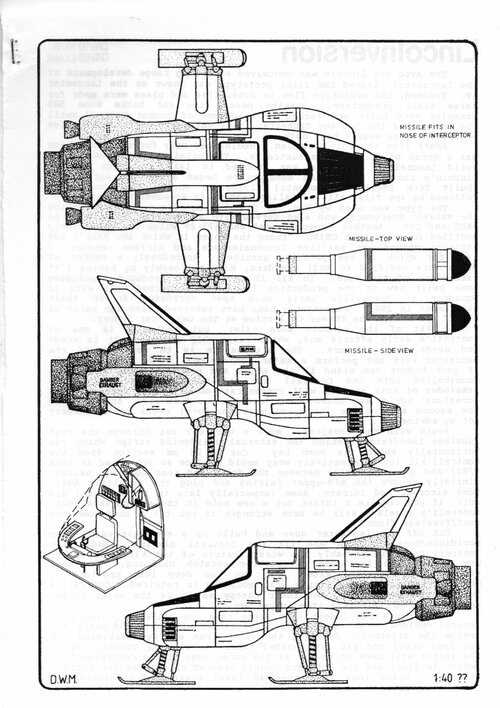 img035.jpg615.6 KB · Views: 11
img035.jpg615.6 KB · Views: 11 -
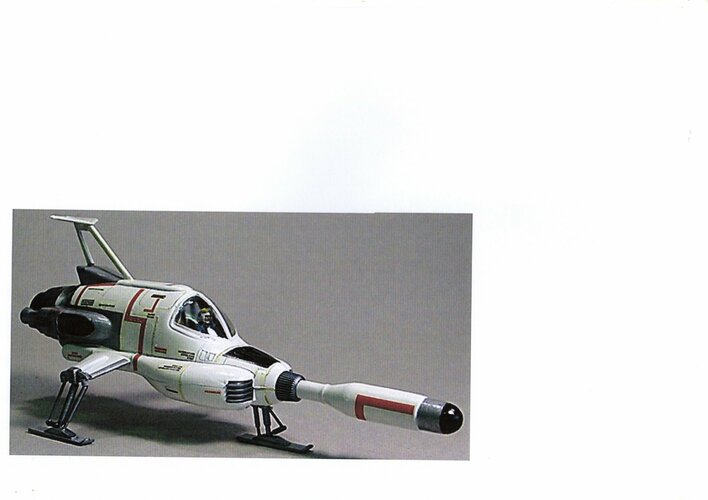 img039.jpg328.8 KB · Views: 10
img039.jpg328.8 KB · Views: 10 -
 img032.jpg405.5 KB · Views: 9
img032.jpg405.5 KB · Views: 9 -
 img041.jpg505.8 KB · Views: 10
img041.jpg505.8 KB · Views: 10 -
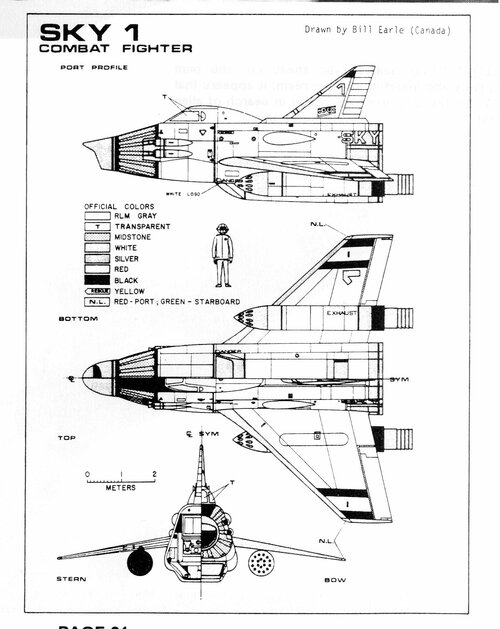 img042.jpg256.4 KB · Views: 13
img042.jpg256.4 KB · Views: 13 -
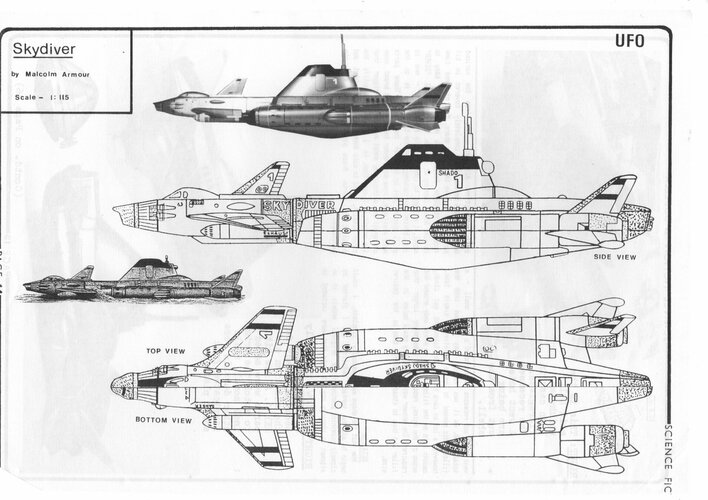 img040.jpg602 KB · Views: 12
img040.jpg602 KB · Views: 12 -
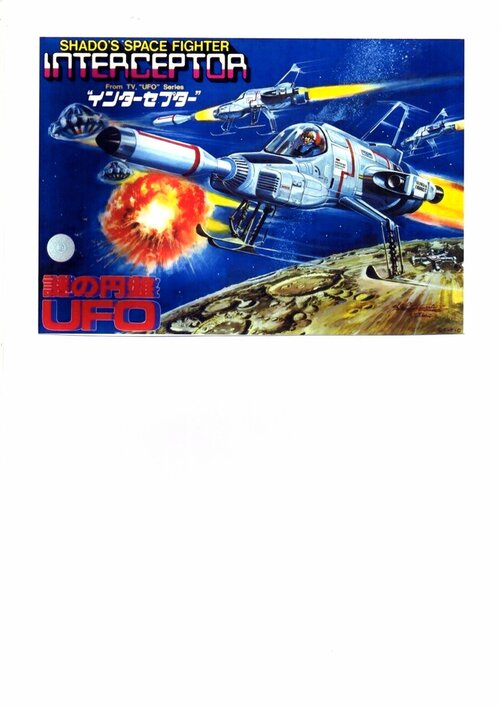 img043.jpg350.5 KB · Views: 11
img043.jpg350.5 KB · Views: 11 -
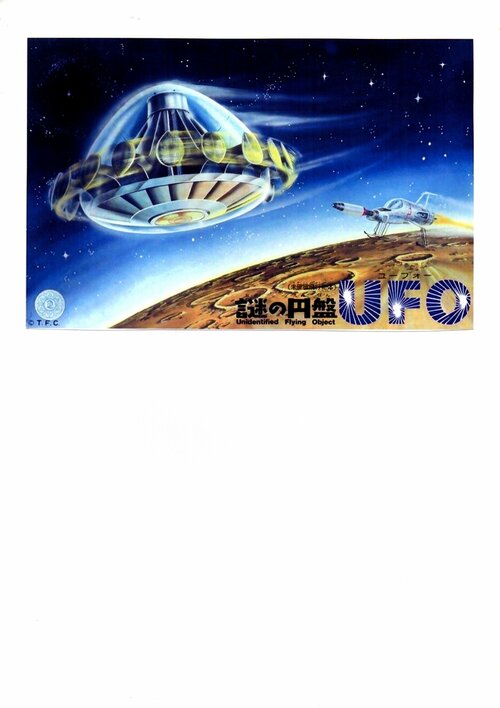 img044.jpg296.1 KB · Views: 11
img044.jpg296.1 KB · Views: 11
In the westerns of the last century there was always a Frenchman who sold rifles to the SiouxOne Certain Desert Nation has an active nuclear power program, and could probably have nuclear bombs within a relatively few years. They have plans and goals for vast megaprojects, advanced structures hundreds of km long. They dream of spaceflight, having had astronauts sent to space along with their own satellites; moon probes are not too far away. At the same time, they have a big box that religious people feel the need to walk around in the blazing summer sun while worshipping a rock. Hundreds regularly die in stampedes for this activity.
Advanced technology and backwards superstitions are not mutually exclusive, especially when you are able to simply buy the advanced tech from someone else. In Babylon 5, humans do not develop FTL, but buy it from the Centauri; in Star Trek, the Klingons, who remain violent savages, have an interstellar empire because *they* were once invaded and conquered by someone more advanced, drove them off and adopted their tech. The world today is filled with savages armed with advanced weapons and carrying smartphones, from Houthis with "hypersonic missiles" to urban thugs with switch-equipped Glocks.
Attachments
The core of our planet is filled with creamy uranium nougat, and the easiest way to get at it is to gravitationally disrupt the planet into a field of rubble. Prior experience has shown the miners that the native populations of such worlds tends to object, so it's more convenient to wipe them out in advance.Many reasons to exterminate us


